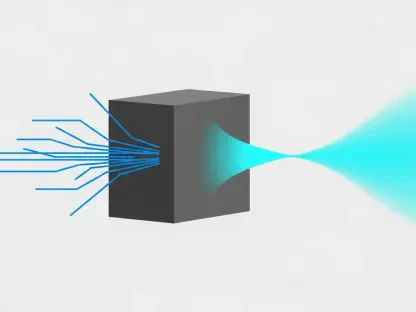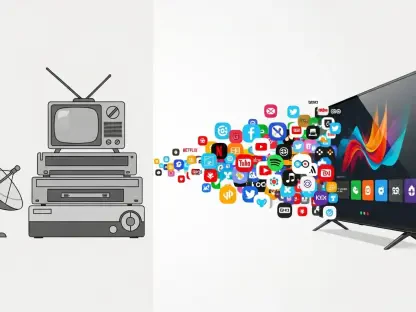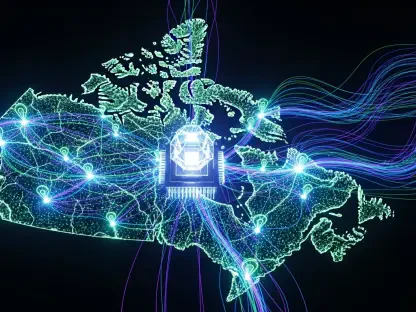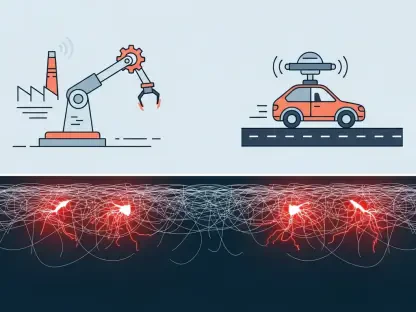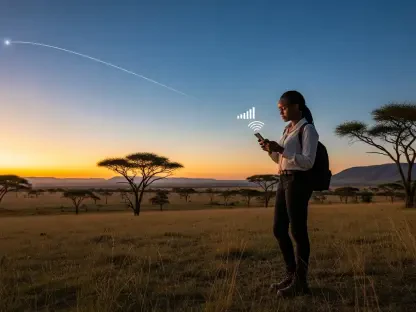The convergence of quantum and classical data transmission could revolutionize telecommunications and quantum computing. Researchers at Northwestern University have made significant strides in this field, achieving a groundbreaking feat of transmitting quantum bits, or qubits, through existing fiber optic lines that also carry high-speed classical signals. This milestone holds profound implications for the scalability and efficiency of quantum computing infrastructure, as it enables qubits to communicate over great distances through already established frameworks. Here, we delve into the nuances of this remarkable advancement, highlighting key aspects and future prospects.
Quantum Bits and Classical Signals in Fiber Optics
The Fragility of Quantum Bits
Quantum bits, or qubits, are exceedingly fragile, making them difficult to handle and transmit using conventional methods. Sensitive to various disturbances such as thermal noise and electromagnetic interference, qubits are easily disrupted, which complicates their transmission when juxtaposed with robust classical signals. Despite these challenges, researchers have long sought to transmit quantum signals alongside classical data in fiber optic cables. Their efforts have recently borne fruit, thanks to the dedicated work of engineers at Northwestern University. In a significant milestone, the team successfully sent entangled photons — a type of qubit — over a distance of 30 kilometers through a fiber optic cable that simultaneously carried a 400 Gbps classical signal.
This achievement showcases the potential of integrating quantum data into existing communication systems without the need for new infrastructure. Entangled photons are essential for quantum computing and secure communication, as they allow for instantaneous state changes between particles, preserving the integrity and security of the transmitted information. The team’s success indicates promising directions for future research and development in this domain, offering a glimpse into a future where quantum bits can travel alongside classical signals without interference or loss of integrity.
Achieving Coexistence
The ability to transmit qubits through the same fiber optic cables that carry classical signals marks a substantial breakthrough. This coexistence is pivotal for scaling up quantum computing infrastructure, as it allows qubits to communicate more efficiently across different physical locations. Traditionally, qubits had to be transmitted through isolated and specialized channels, limiting their practical implementation. The successful transmission of entangled photons over long distances represents a significant step forward in integrating quantum and classical data transmission into a unified medium.
Furthermore, this combined transmission capability leverages existing fiber optic infrastructure, making it a cost-effective and timely solution for advancing quantum computing networks. By utilizing the currently deployed fiber optic cables, researchers can bypass the need for developing entirely new networks, accelerating the deployment and adoption of quantum technologies. This practical approach is crucial for the seamless and scalable implementation of quantum communications, paving the way for sophisticated, high-performance quantum networks that can coexist with established telecommunications systems.
Quantum Teleportation
Understanding Quantum Teleportation
Quantum teleportation refers to the process of transmitting the quantum state of one particle to another particle over a distance without physically transporting the particle itself. This approach is particularly vital for quantum computing, where maintaining the coherence and integrity of quantum information is crucial. By using entanglement, a fundamental phenomenon in quantum physics, the state of a qubit can be instantaneously transferred to another qubit, regardless of the distance separating them.
Demonstrating quantum teleportation through existing fiber optic lines reinforces the feasibility of adapting current infrastructure for quantum data transmission. This method provides a solution to the challenge of moving delicate quantum information across long distances, a necessity for creating expansive, distributed quantum computing networks. The successful implementation of quantum teleportation by Northwestern University’s team signifies a substantive advancement in the field, indicating that the present-day fiber optic systems can be repurposed for pioneering quantum applications.
Practical Implications
Integrating qubits with classical bits within the same communication lines holds significant promise for the practical realization of large-scale quantum networks. Transitioning from isolated quantum channels to shared fiber optic lines enhances the feasibility of extensive quantum computing frameworks, enabling more straightforward and efficient inter-qubit communication over vast distances. Such advancements are crucial for the potential adoption and scalability of quantum computing technologies.
The examples set by the Northwestern University team underscore the potential of achieving quantum teleportation over long distances using conventional transmission mediums. This progress represents more than just a technological milestone; it serves as a validation of quantum principles in real-world settings, driving home the practicality and applicability of quantum communications. These insights solidify the foundation for future quantum network development, indicating a clear path toward harmonizing quantum and classical data within the same infrastructural framework. The endeavor’s success highlights the critical need for continued research and innovation to overcome prevalent challenges and harness the full potential of integrated quantum-classical communication systems.
Challenges and Technological Advances
Overcoming Photonic Noise
A primary obstacle in merging quantum and classical signals within fiber optic cables is the prevalent photonic noise arising from classical data traffic. This noise tends to overwhelm the faint quantum signals, akin to trying to discern a whisper in a cacophonous environment. In earlier stages of research, balancing these signals posed substantial difficulties. Detecting the subtle quantum signals amidst the robust classical signals meant that the signal-to-noise ratio had to be meticulously managed to avoid interference.
Recent breakthroughs have significantly mitigated these issues, thanks to advancements in photodetector technology. Today’s photodetectors boast improved sensitivity, with efficiencies nearing 90%, a substantial leap from the previously recorded 20% efficiencies. This marked improvement results in more precise and reliable detection of quantum signals amidst the presence of classical data traffic. The enhanced sensitivity allows researchers to better manage and differentiate between the two types of signals, facilitating smoother and more effective quantum signal transmission.
Technological Improvements
Technological advancements extend beyond improved photodetectors. Engineers and scientists continuously seek innovative ways to reduce noise and enhance synchronization within the fiber optic lines. Ensuring low noise levels is critical to maintaining the delicate state of quantum information. Synchronization protocols must be meticulously designed to facilitate the precise timing needed for effective quantum communication. The practical deployment of these technologies hinges on further innovations in noise reduction techniques and synchronization methodologies.
Another area of focus lies in developing multiplexing techniques that enable multiple channels of classical signals to coexist with quantum signals. Mimicking current telecommunications infrastructure, this approach ensures that quantum data transmission can scale up to handle varying degrees of classical signal traffic. The capacity to multiplex these signals amplifies the potential for distributed quantum computing applications. An evolving capability to transmit qubits using existing infrastructure means that quantum and classical signal integration can be achieved without the need for extensive modifications or new installations, thus accelerating the broader implementation of quantum technologies.
Practical Implications and Future Research
Scaling Quantum Networking
Looking ahead, future research will likely delve into handling multiple channels of classical signals within each fiber optic cable. This approach mirrors the current telecommunications infrastructure, wherein multiple data streams coexist within the same transmission medium. A significant challenge in this advancement will be managing synchronization and timing precision, components essential for effective quantum communication. Ensuring accurate timing and alignment between qubits and classical bits is paramount for maintaining the coherence and reliability of quantum information.
The overarching trend points to integrating quantum and classical data transmission while leveraging the existing fiber optic infrastructure. This method not only conserves resources but also expedites the deployment of quantum networks, thereby making quantum computing more accessible and practical. Researchers aim to create robust methods to handle the coexistence of multiple signals, balancing the need for precise quantum synchronization with the high-speed demands of classical telecommunications.
Future Directions
The merging of quantum and classical data transmission could transform telecommunications and quantum computing. At Northwestern University, researchers have achieved a significant breakthrough by transmitting quantum bits, or qubits, via existing fiber optic cables that also carry high-speed classical data. This achievement has substantial implications for the scalability and efficiency of quantum computing infrastructure, as it allows qubits to communicate over vast distances through pre-established frameworks. By utilizing current fiber optic lines, the integration of quantum data transfer into our existing communication systems becomes more feasible and cost-effective. This innovative stride paves the way for greater advancements in both telecommunications and computing, making it possible to build more efficient and expansive quantum networks. The combination of quantum and classical data transmission holds promising potential for future technologies, setting the stage for a new era in how we manage and share information across large distances. Here, we explore the nuances of this remarkable development and discuss its key aspects and future prospects.


